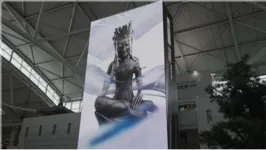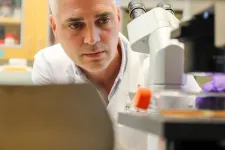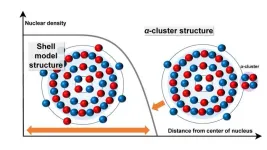(Press-News.org) New evidence of human occupation in southeast Indonesia dating back 42,000 years offers fresh clues on the route taken by some of the first humans to arrive in our region, according to a study from The Australian National University (ANU).
Lead author and ANU PhD candidate Hendri Kaharudin said the location of the discovery -- at Elivavan on Indonesia’s Tanimbar islands -- makes it especially significant.
“Tanimbar is located just off the ‘Sahul shelf’, which encompasses modern-day Australia, as well as New Guinea,” he said.
“The question of how our early ancestors arrived there from Southeast Asia is one of the most captivating in prehistoric migration, mainly because of the vast distances covered and advanced seafaring skills that would have been required.
“There are two main routes that have been explored as possibilities since the mid-20th century – a northern path via islands like Sulawesi, and a southern track passing near Timor and the Tanimbar islands.
“This discovery marks one of the southern route’s earliest known sites, making it a crucial piece of the puzzle.”
According to the researchers, while there are still unanswered questions about Elivavan’s first inhabitants, the risky nature of the sea crossings suggests the colonists had developed advanced maritime technology by around 42,000 years ago.
“They would have had to traverse bodies of water exceeding 100 kilometres in distance, regardless of their direction of travel,” Mr Kaharudin said.
“Along with tiny fragments of pottery we also found evidence of things like bones, shells and sea urchins that point to the island’s role as a hub for early maritime activities.
“As more work is done in lesser-explored regions like the Tanimbar islands, I expect we’ll uncover more about early human life and migration patterns.”
Mr Kaharudin said it’s also clear the colonisation of Sahul was not a single event but “a gradual process involving successive waves of seafaring populations”.
“Coastal communities likely navigated shorelines, exploiting marine resources and establishing resilient settlements along their journey,” he said.
“This island-hopping strategy facilitated cultural exchange and adaptation, shaping diverse societies across the land mass.”
The study was conducted in collaboration with Indonesia’s National Research and Innovation Agency (BRIN). The research team also included Professor Sue O’Connor and Dr Shimona Kealy from ANU.
The research has been published in Quaternary Science Reviews (QSR).
“Tanimbar is located just off the ‘Sahul shelf’, which encompasses modern-day Australia, as well as New Guinea,” he said.
“The question of how our early ancestors arrived there from Southeast Asia is one of the most captivating in prehistoric migration, mainly because of the vast distances covered and advanced seafaring skills that would have been required.
“There are two main routes that have been explored as possibilities since the mid-20th century – a northern path via islands like Sulawesi, and a southern track passing near Timor and the Tanimbar islands.
“This discovery marks one of the southern route’s earliest known sites, making it a crucial piece of the puzzle.”
According to the researchers, while there are still unanswered questions about Elivavan’s first inhabitants, the risky nature of the sea crossings suggests the colonists had developed advanced maritime technology by around 42,000 years ago.
“They would have had to traverse bodies of water exceeding 100 kilometres in distance, regardless of their direction of travel,” Mr Kaharudin said.
“Along with tiny fragments of pottery we also found evidence of things like bones, shells and sea urchins that point to the island’s role as a hub for early maritime activities.
“As more work is done in lesser-explored regions like the Tanimbar islands, I expect we’ll uncover more about early human life and migration patterns.”
Mr Kaharudin said it’s also clear the colonisation of Sahul was not a single event but “a gradual process involving successive waves of seafaring populations”.
“Coastal communities likely navigated shorelines, exploiting marine resources and establishing resilient settlements along their journey,” he said.
“This island-hopping strategy facilitated cultural exchange and adaptation, shaping diverse societies across the land mass.”
The study was conducted in collaboration with Indonesia’s National Research and Innovation Agency (BRIN). The research team also included Professor Sue O’Connor and Dr Shimona Kealy from ANU.
The research has been published in Quaternary Science Reviews (QSR).
END
New discovery adds to story of ancient human migration
2024-07-19
ELSE PRESS RELEASES FROM THIS DATE:
A tale of two “niches”: The microbial connection between urinary bladder and vagina
2024-07-19
The human body hosts a diverse array of microorganisms that maintain a delicate balance crucial for overall health. This microbial harmony can be disrupted by factors like infections, aging, and hormonal changes, leading to dysbiosis—a condition where microbial communities become imbalanced and harmful to health. Postmenopausal women, for instance, are particularly susceptible to recurrent urinary tract infections and inflammation, including cystitis, due to these microbial shifts.
Dr. Takanori Sekito from the Department of Urology, Okayama University Graduate School of Medicine, Japan explains, “In postmenopausal women, the vaginal flora changes ...
Chemists design novel method for generating sustainable fuel
2024-07-19
COLUMBUS, Ohio – Chemists have been working to synthesize high-value materials from waste molecules for years. Now, an international collaboration of scientists is exploring ways to use electricity to streamline the process.
In their study, recently published in Nature Catalysis, researchers demonstrated that carbon dioxide, a greenhouse gas, can be converted into a type of liquid fuel called methanol in a highly efficient manner.
This process happened by taking cobalt phthalocyanine (CoPc) molecules and spreading them evenly on carbon nanotubes, graphene-like tubes that have unique electrical properties. On their surface was an electrolyte ...
ETRI breathes digital life into cultural heritage
2024-07-19
South Korean researchers are revitalizing the nation's world-class cultural heritage through digital transformation. By collaborating with museums, they are bringing the rich history and culture of Korea to life using AI-based technology development.
Since 2020, the Electronics and Telecommunications Research Institute (ETRI) and the National Museum of Korea have been working together under a Ministry of Culture, Sports and Tourism R&D project to develop and demonstrate key technologies for the digital transformation of Korean cultural heritage.
The two institutions have been applying ...
These healthcare professionals may be secret weapon against hypertension, study says
2024-07-19
When it comes to helping patients with high blood pressure get their hypertension under control, a new Tulane University study finds that pharmacists and community health workers have the best success rates.
The study, published in Circulation: Cardiovascular Quality and Outcomes, analyzed data from 100 hypertension trials around the world and compared blood pressure reductions by the type of healthcare professionals who led the interventions.
While interventions led by nurses, physicians and multiple healthcare professionals still significantly reduced blood pressure for patients, pharmacists achieved the greatest improvements, followed ...
New humidity-driven membrane to remove carbon dioxide from the air
2024-07-19
Direct air capture was identified as one of the ‘Seven chemical separations to change the world’. This is because although carbon dioxide is the main contributor to climate change (we release ~40 billion tons into the atmosphere every year), separating carbon dioxide from air is very challenging due to its dilute concentration (~0.04%).
Prof Ian Metcalfe, Royal Academy of Engineering Chair in Emerging Technologies in the School of Engineering, Newcastle University, UK, and lead investigator states, “Dilute ...
Study shows promise for a universal influenza vaccine
2024-07-19
New research led by Oregon Health & Science University reveals a promising approach to developing a universal influenza vaccine — a so-called “one and done” vaccine that confers lifetime immunity against an evolving virus.
The study, published today in the journal Nature Communications, tested an OHSU-developed vaccine platform against the virus considered most likely to trigger the next pandemic.
Researchers reported the vaccine generated a robust immune response in nonhuman primates that were exposed ...
To walk, you only need fins (and maybe a sense of adventure)
2024-07-19
Okinawa’s mangrove forests are home to many animal species, from crabs to kingfishers; they host a diverse ecosystem teeming with life. Among the quirkier residents living there is “Minami-Tobihaze” — the barred mudskipper. “They are fish, but they can walk and live partly on land,” says Dr. Fabienne Ziadi-Künzli from the Nonlinear and Non-equilibrium Physics Unit, who is the first author of a study on mudskipper anatomy, which was recently published in the Journal of Anatomy.
Adapting to a new life
The barred mudskipper, scientifically called Periophthalmus argentilineatus, has more than just one oddity. Their eyes ...
Come closer: titanium-48’s nuclear structure changes when observed at varying distances
2024-07-19
The world around us is made up of particles invisible to the naked eye, but physicists continue to gain insights into this mysterious realm. Findings published in Physical Review C by Osaka Metropolitan University researchers show that the nuclear structure of an atom likely changes depending on the distance the protons and neutrons are from the center of the nucleus.
OMU graduate student Maito Okada, Associate Professor Wataru Horiuchi, and Professor Naoyuki Itagaki from the Graduate School of Science compared calculations using theoretical models with existing experimental data to determine whether titanium-48, the most common isotope of titanium with 22 protons and 26 neutrons, ...
Good timing: UNLV study unravels how our brains track time
2024-07-19
Ever hear the old adage that time flies when you’re having fun? A new study by a team of UNLV researchers suggests that there’s a lot of truth to the trope.
Many people think of their brains as being intrinsically synced to the man-made clocks on their electronic devices, counting time in very specific, minute-by-minute increments. But the study, published this month in the latest issue of the peer-reviewed Cell Press journal Current Biology, showed that our brains don’t work that way.
By analyzing changes in brain activity patterns, the research team ...
Positive and negative impacts of interfacial hydrogen bonds on photocatalytic hydrogen evolution
2024-07-19
Photocatalytic hydrogen evolution from water is a key technology for achieving sustainable hydrogen production. However, the direct impact of the microscopic structure of interfacial water molecules on photocatalytic reactivity remains unexplored. In this study, the crucial roles of interfacial hydrogen bond structure and dynamics, as well as the optimal interfacial water environment for promoting H2 evolution were uncovered. These findings provide molecular-level insights that can guide the design of interfacial water conditions to enhance photocatalytic performance.
Hydrogen production via photocatalytic water splitting is a sustainable ...






